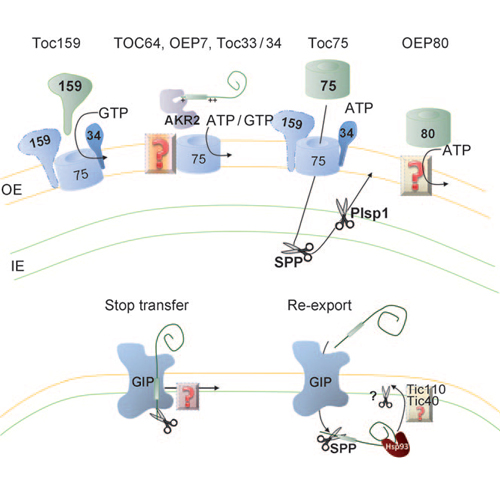Protein Import into Chloroplasts: Dealing with the (Membrane) Integration Problem
21-Jun-2011
ChemBioChem, 2011, DOI: 10.1002/cbic.201100118, Volume 12, Issue 11, pages 1655–1661, published on 21.06.2011
ChemBioChem, online article
ChemBioChem, online article
Due to their endosymbiotic origin, chloroplasts are completely reliant on post-translational import of their resident proteins.1 Integral membrane proteins comprise approximately 20 % of the total estimated chloroplast proteome.2, 3 Based on several proteomic analyses, 20 % of all membrane proteins are located in the inner envelope (IE).4–6 Judging from the protein pattern on an SDS-PAGE gel, it seems there are fewer proteins in the outer envelope (OE) than in the IE.7 In light of the great importance of membrane proteins in many essential chloroplast processes, it appears puzzling that not much is known about the mechanisms of their targeting and import. Considering that in chloroplasts an additional membrane system, the thylakoids, is present and makes coordinated targeting and insertion even more complicated, reliable sorting becomes of vital importance.











